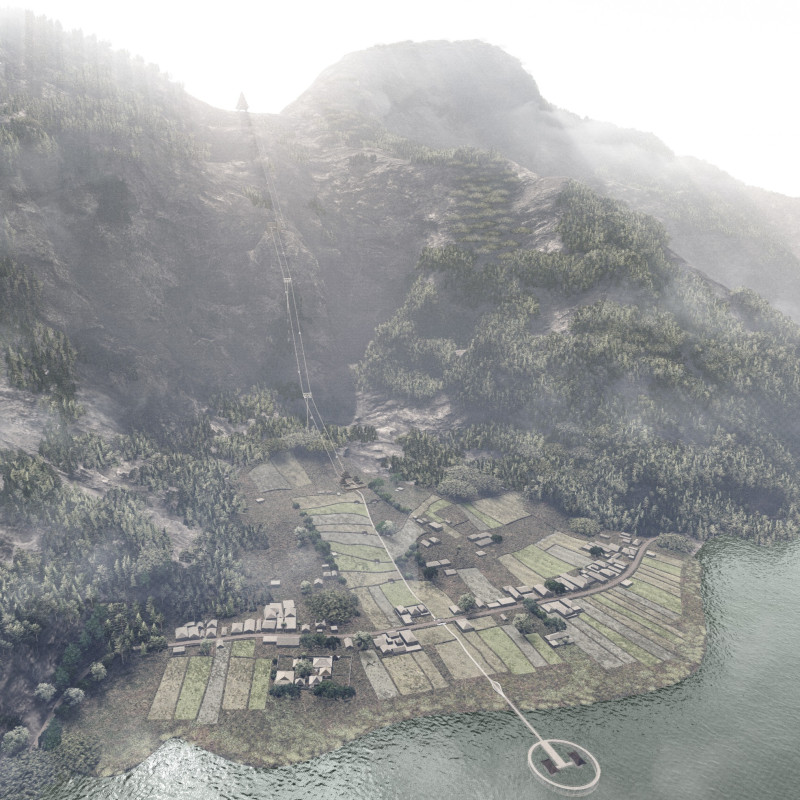5 key facts about this project
This design serves multiple functions, providing spaces that cater to diverse activities while fostering community interaction. The layout encourages fluid movement through open areas, while distinct zones are established for various purposes, such as gathering spaces, individual workstations, and relaxation areas. This careful consideration ensures that the architecture is not merely a backdrop for activity but an active participant in the dynamic of human engagement.
Important elements within the project reflect a deep understanding of user experience and environmental conditions. Large windows and strategically placed openings enhance natural lighting and ventilation, promoting a sustainable approach to energy use. The use of local materials not only strengthens ties to the setting but also provides a tactile quality to the architecture that speaks to its craftsmanship. For instance, the project features elements such as timber cladding, exposed concrete, and glazed facades, creating a nuanced interplay of textures that invites exploration and interaction.
Unique design approaches are evident in how the architecture addresses sustainability. The project incorporates green roofs and rainwater harvesting systems, demonstrating a commitment to minimizing environmental impact. Such features highlight a forward-thinking perspective that values ecological responsibility alongside architectural beauty. The designers have created spaces that not only speak to contemporary needs but also anticipate future challenges, ensuring that the building will remain relevant in an ever-changing context.
The interplay between interior and exterior spaces is another noteworthy aspect of this project. The design blurs the lines between inside and outside, promoting a continuous flow that enhances the user experience. Outdoor terraces, balconies, and communal courtyards are utilized as extensions of the living spaces, serving as venues for social interaction while connecting occupants to nature. This thoughtful integration of landscape elements reflects an understanding of the psychological benefits of greenery and natural light in built environments.
Moreover, the architectural plans illustrate meticulous attention to detail in the functionality of spaces. Every corner of the project appears to have been considered, from the placement of furniture to the accessibility of areas. This deliberate approach ensures that the architecture is adaptable to various uses, aligning with the needs of its occupants without compromising on aesthetic values.
In summary, this architectural project embodies a well-rounded approach that harmonizes form, function, and context. The emphasis on sustainable practices, combined with thoughtful spatial planning and the use of local materials, provides a compelling narrative that resonates with its environment. For a deeper understanding of the architecture, readers are encouraged to explore the project's architectural plans, sections, and designs, which offer further insights into the innovative ideas and methodologies utilized in this thoughtful architectural endeavor.


 Corellia Rachel Favian Hidayat ,
Corellia Rachel Favian Hidayat ,  Kevin Nathanael ,
Kevin Nathanael ,  Riezky Fernanda Evandy,
Riezky Fernanda Evandy,  Jessica Debora Adelheid
Jessica Debora Adelheid 




















